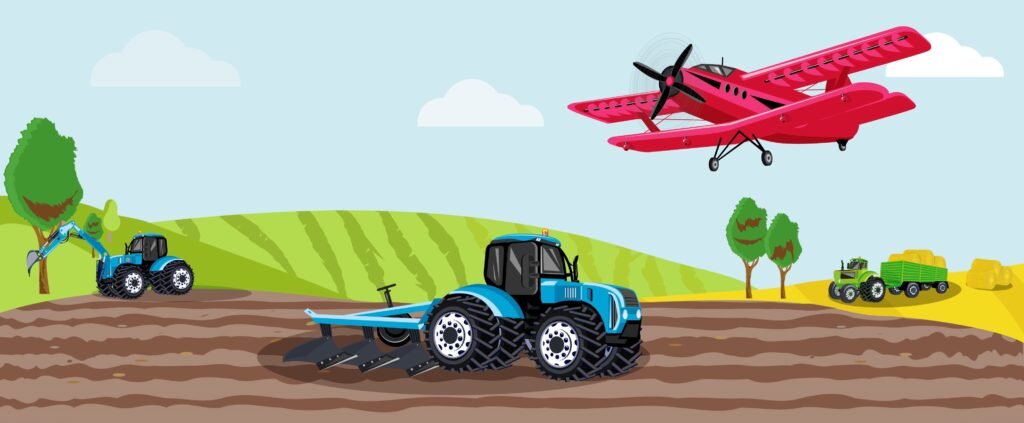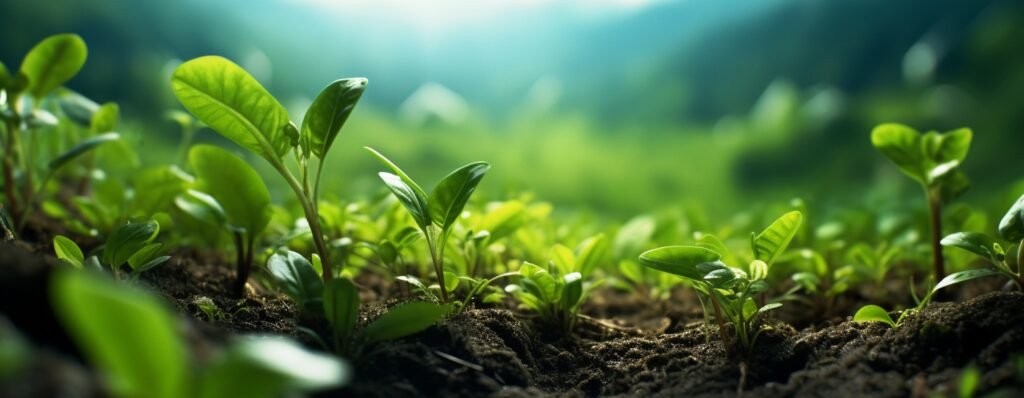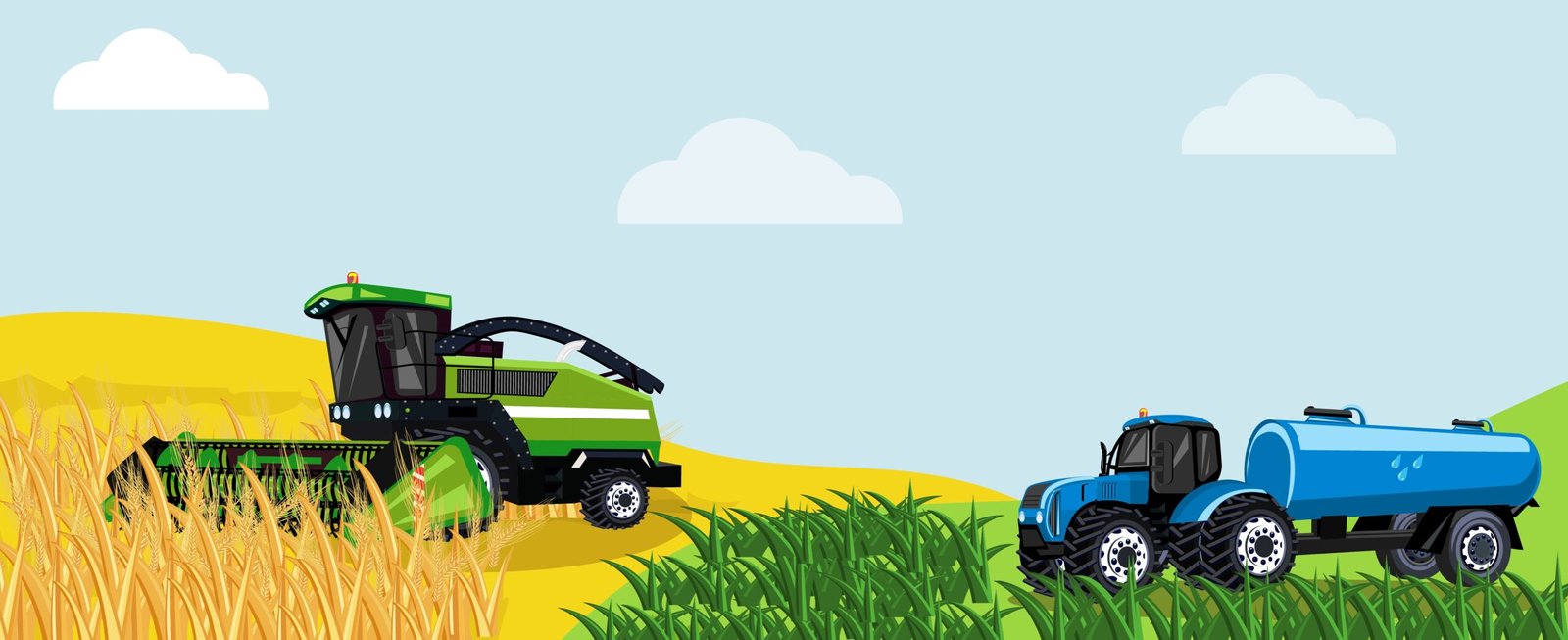Often referred to as the foundation of human civilization, agriculture is a broad field that includes the production of food, fiber, medicinal herbs, and other goods necessary to maintain and improve human life, as well as the rearing of animals. Even though this long-standing tradition has undergone significant evolution from its rudimentary beginnings to the sophisticated technical systems of today, its importance has not changed. This blog will examine the many facets of agriculture, including its importance, difficulties, and creative solutions being used to maintain its efficiency and sustainability.
Agriculture's Historical Significance
In essence, the history of agriculture is the history of human development. The introduction of agriculture heralded the shift from roving hunter-gatherer tribes to permanent farming communities around 10,000 years ago. Due to this change, there was an increase in food production, which in turn fueled population expansion, the creation of cities, and the birth of civilizations. Humans gained control over their food source through the domestication of plants and animals, which opened the door to advancements in science, technology, and culture
Producing Crops: The Foundation of Agriculture
The majority of the food that is consumed by humans and animals comes from crops, which are the foundation of agriculture. It entails a number of crucial actions and procedures:
1. Types of Crops
Cereal Crops
Essential for the world’s food security are staples like wheat, rice, and maize.
Leguminous Crops
An essential source of protein, beans, lentils, and peanuts improve the soil by fixing nitrogen.
Root Crops
The nutrient density of potatoes, carrots, and turnips is dependent on them.
Fruits and Vegetables
A balanced diet includes foods like tomatoes, cucumbers, oranges, apples, and oranges.
Cash Crops
Sugarcane, cotton, tobacco, and coffee are important exports for many nations.
2. Agronomic Practices
Soil Preparation
Tilling and plowing are methods that produce the best possible seedbed for planting.
Planting
Putting seed or seedlings in the ground after the soil has been properly prepared.
Irrigation
Techniques such as flood, sprinkler, and drip irrigation guarantee that crops get enough water.
Fertilization
The process of supplying necessary nutrients by applying organic or inorganic fertilizers.
Pest and Weed Control
To protect crops, use herbicides, insecticides, and integrated pest management.

Animal husbandry: Producing Livestock for a Future That Is Sustainable
Breeding and keeping animals for the purpose of producing meat, dairy, wool, and other animal products is known as animal husbandry. Important elements consist of:
1. Livestock Types
Ruminants
Goats, sheep, and cattle are essential for the production of meat and dairy products.
Non-ruminants
Turkeys, hens, and pigs are good providers of protein.
Specialty Animals
Fish (aquaculture), horses, and bees are useful to a variety of agricultural industries.
2. Livestock Management
Breeding
Productivity and disease resistance are two desired features that are enhanced by selective breeding.
Feeding
supplying foods that are balanced to promote development, procreation, and lactation.
Housing
Providing suitable housing to shield animals from stimulants in their surroundings.
Health treatment
Vaccinations, disease control, and routine veterinarian treatment are essential for the wellbeing of cattle.
Sustainable Agriculture: Harmonizing Environmental Health and Productivity
The goal of sustainable agriculture is to satisfy current needs without endangering the capacity of future generations to satisfy their own. This entails implementing behaviors that preserve resources and uphold or improve the environment’s quality. Important elements consist of:
A. Conservation Practices
Crop Rotation– To promote soil health and lessen insect development, alternate various crops in a sequential manner.
Planting cover crops to preserve and improve the soil is known as “Cover Cropping”
B. Organic Farming
Selecting natural substitutes for manmade chemicals.
Stressing biodiversity and soil health to build robust farming systems.
C. Precision Agriculture
Optimizing field-level management through the use of technology (drones, sensors, and GPS).
– Making decisions based on facts to increase productivity and cut waste

The Difficulties Modern Agriculture Faces
Modern agriculture has many obstacles that jeopardize its sustainability and production, notwithstanding its advancements:
Climate Change
Crop yields and livestock health are impacted by variations in temperature, precipitation, and extreme weather events
Population Growth
By 2050, there will be 9.7 billion people on the planet, which will require more food to be produced.
Scarcity of Resources
Overuse and environmental degradation are causing a shortage of water, arable land, and other essential resources
Innovations Fueling Advancements in Agriculture
To overcome these obstacles and secure the future of agriculture, innovation is essential. Among the most encouraging advancements are:
Genetic Engineering
creating more robust, fruitful, and nutrient-dense genetically engineered organisms (GMOs).
Automation and Robotics
Using robots to plant, harvest, and process in order to save labor expenses and boost efficiency.
Data Analytics
Supply chain management, weather forecasting, and agricultural practice optimization through the use of big data.
Agriculture's Economic and Social Aspects
For millions of people worldwide, agriculture is a way of life rather than merely a source of income. Its sustainability depends on resolving a number of social and economic problems, including:
Market Access
facilitating improved market access for farmers so they may sell their produce and make a reasonable living.
Policy and Subsidies
Enacting laws and financial aid to promote sustainability and agricultural output.
Rural Development
Enhancing the standard of living for farming communities through investments in services, infrastructure, and education in rural areas.
Conclusion
Agriculture remains the lifeblood of human civilization, continuously adapting to meet the demands of a growing population and changing environment. By embracing sustainable practices, innovative technologies, and supportive policies, we can ensure that agriculture continues to thrive and provide for future generations. As we move forward, it is crucial to recognize the vital role agriculture plays in our lives and work collectively to address the challenges it faces. Through concerted efforts, we can build a resilient agricultural system that supports both human and environmental well-being.











